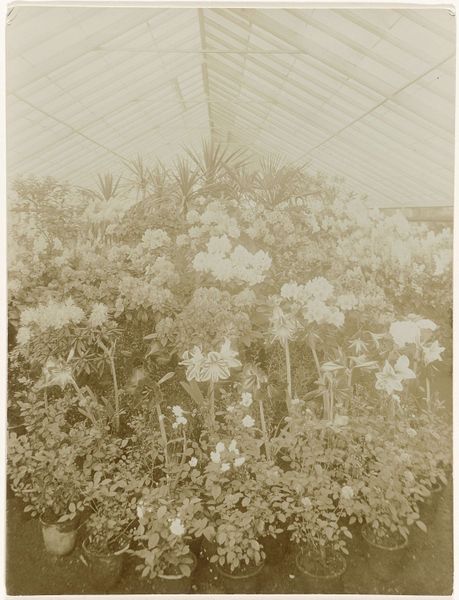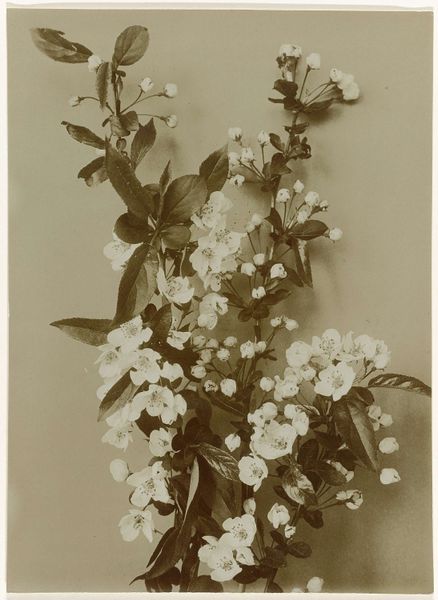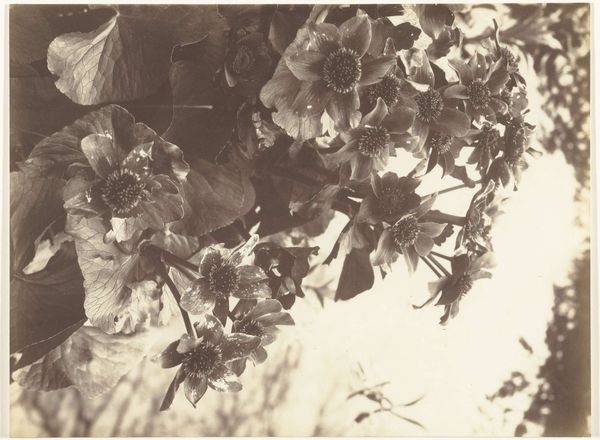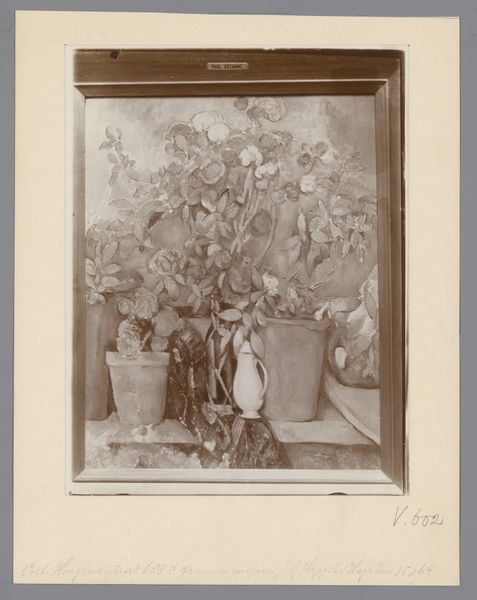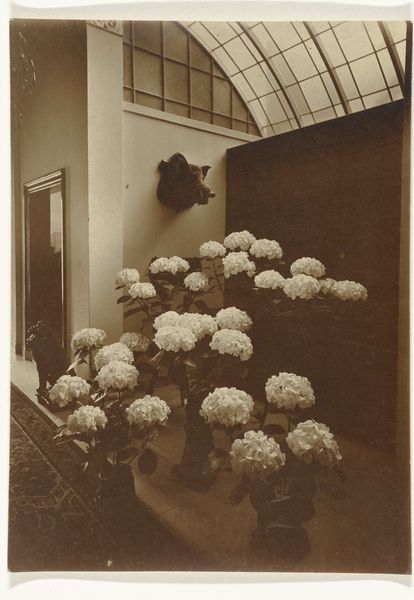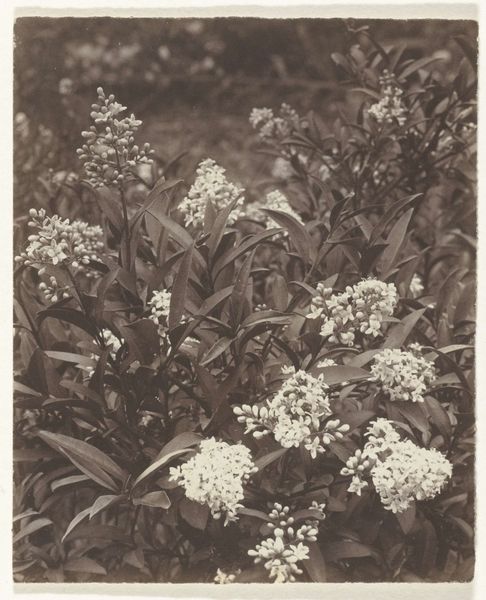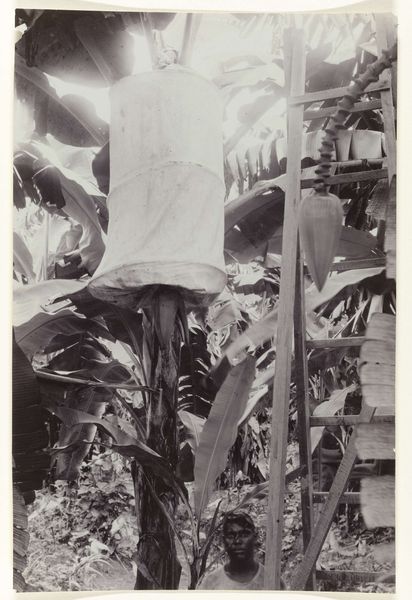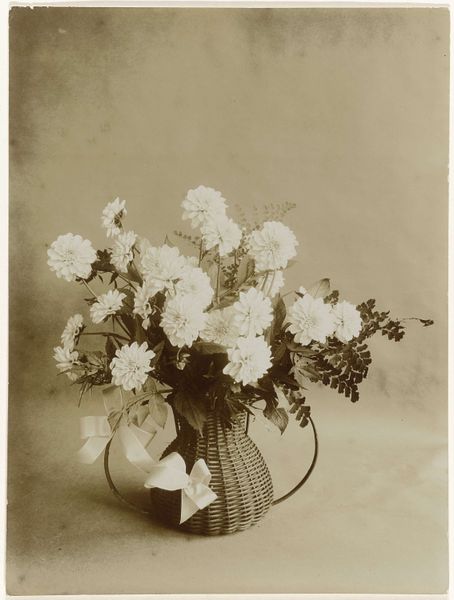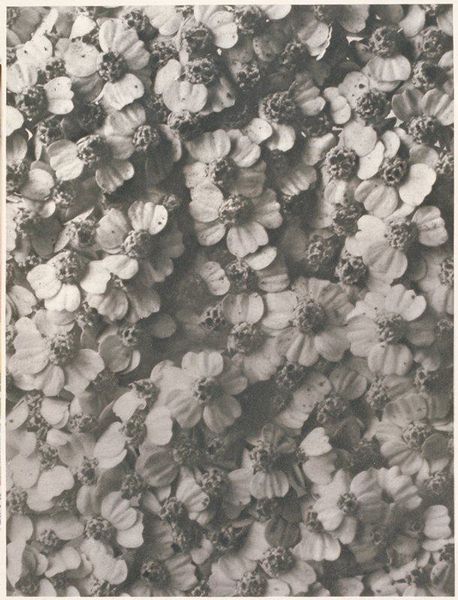
Dimensions: height 222 mm, width 164 mm
Copyright: Rijks Museum: Open Domain
Editor: This photograph, taken by Richard Tepe between 1900 and 1930, is titled 'Flowering Plants in a Greenhouse.' It's a beautiful, somewhat hazy image. What stands out to me is how it captures the controlled yet wild nature of the greenhouse, a space both natural and artificial. How do you interpret this work? Curator: It's an intriguing piece, isn't it? When I look at this photograph, I'm struck by the historical and social implications embedded within what seems like a simple depiction of plants. Consider the context: late 19th, early 20th century. The rise of industrialization allowed for structures like greenhouses, creating environments detached from local climates, effectively allowing for a control over nature itself. What does it mean to cultivate a space like this during a time of shifting social landscapes and evolving class structures? Editor: So, it’s about more than just pretty flowers? Curator: Precisely. Greenhouses often represented wealth and leisure, a controlled Eden accessible primarily to the privileged. Tepe’s choice to document this space invites questions about access, power dynamics, and the very act of manipulating the natural world for aesthetic and material gain. Does the monochromatic nature of the photograph amplify or subdue those implications, do you think? Editor: That makes me consider how photography itself, especially then, allowed for documenting and controlling images, somewhat similar to how the greenhouse controls the plants inside. I see that the impressionistic and realistic styles converge to reveal power dynamics that are both visible and obscured by aesthetic beauty. Curator: Indeed. By considering photography within historical and social currents, we reveal the intersectional narratives hidden beneath layers of aesthetic appreciation. Editor: I'll definitely view greenhouses—and photographs—differently now! Thank you for sharing your insights. Curator: It's a pleasure! Every artwork is a door, and our job is to explore the historical, cultural and social contexts waiting behind it.
Comments
No comments
Be the first to comment and join the conversation on the ultimate creative platform.
